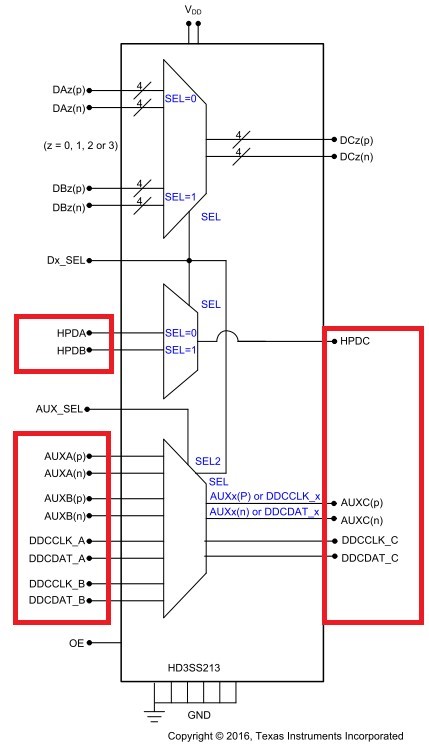Hi !
We are using the HD3SS213 to multiplex CSI-2/D-PHY lanes, a different purpose than the standard use-case. As such, in our application the highlighted signals in red below are not used:
Finally, a more general question: do you foresee any potential problem by using the HD3SS213 with the purpose of CSI-2/D-PHY multiplexing?
Pedro

